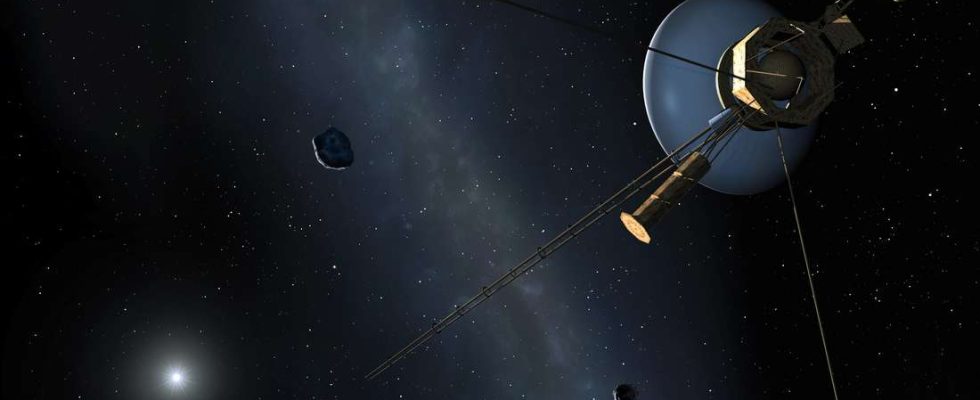Press
For five long months there was no intelligible signal from the Voyager 1 spacecraft. Now a NASA team has apparently solved the mystery.
Pasadena – No space probe is further from Earth than “Voyager 1”. The NASA probe has been in interstellar space beyond our solar system for several years and is sending valuable scientific data to Earth from there. At least it did that until November 14, 2023. Since then, no understandable data has come from “Voyager 1” – a cause for concern for the US space agency NASA and its Jet Propulsion Laboratory, which looks after the two twin “Voyager” space probes.
While “Voyager 2” continued to send data to Earth without any problems, “Voyager 1” caused headaches for their team for months. But they are now likely to have been blown away. On April 20, 2024 – a little more than five months since the last meaningful data transfer – the space probe reported to Earth in such a way that the “Voyager” team could do something with it. What’s more, for the first time in five months it was possible to check the status and health of the spacecraft, says NASA.
| Voyager 1 |
| September 5, 1977 |
| 24.3 billion kilometers |
| 22 hours and 33 minutes |
| 4 out of the original 10 |
| The identical sister probe Voyager 2 launched about two weeks earlier |
| Source: NASA |
NASA’s Voyager 1 spacecraft sent incomprehensible data to Earth for months
This success story follows many months in which the team desperately tried to get “Voyager 1” to cooperate. The problem: The space probe is far too far away to visit and repair – after all, there are now more than 24 billion kilometers between Earth and the probe that was launched in 1977. This means something else that made repair attempts much more difficult: a signal takes around 22 hours and 33 minutes to travel between the Earth and the space probe – and the return journey takes as long again.
This means that after every change that the “Voyager” team sent to the spacecraft into space, they had to wait almost two days to see whether the changes were successful. On April 20th the time had finally come – the team now knows what problem “Voyager 1” has and how it can be solved: One of the three computers on board the spacecraft, the Flight Data Subsystem (FDS), is affected. It is responsible for packaging the science and status data before sending it to Earth.
“Voyager 1”: Defective chip is responsible for problems – NASA finds a solution
But apparently a chip that stores part of the FDS memory is defective. Part of the FDS software is also stored on it – it is missing from “Voyager 1” and ensures that all scientific and system data becomes unusable. On Earth you would replace a defective chip – 24 billion kilometers away you have to be a little more inventive. So the “Voyager” team decided to place the affected code somewhere else in the FDS memory.
On April 18, a command was sent to Voyager 1 for the first time to store the code that packages the spacecraft’s system data elsewhere. The spacecraft’s response on April 20 showed that the effort was successful – Voyager 1 sent back a readable status update. In the coming weeks, the other parts of the affected software will be moved in this way. “Voyager 1” will then send readable scientific data to Earth again.
In February, Suzanne Dodd, the head of the “Voyager” project, expressed cautious optimism: “It would be the greatest miracle if we got her back. We have not given up yet.” It seems as if the “greatest miracle” is now actually happening. (tab)

